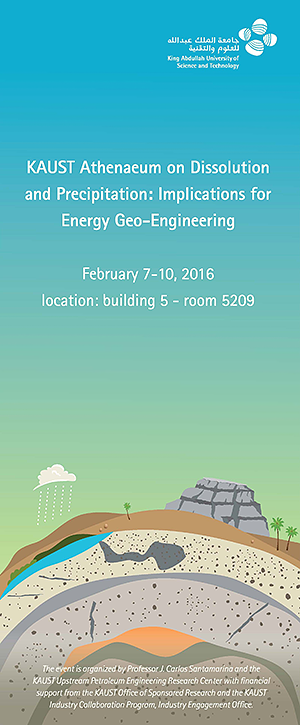.jpg?sfvrsn=1a62d0cb_0)
.jpg?sfvrsn=1a62d0cb_0)

Click here for the official Athenaeum website
 Mineral dissolution and precipitation are complex processes in the subsurface due to their inherently hydro-chemo-
Mineral dissolution and precipitation are complex processes in the subsurface due to their inherently hydro-chemo-  thermo-bio-mechanical (HCTBM) coupled nature, and ensuing instabilities. Yet, dissolution and precipitation are together a common geological phenomenon that has contributed to sediment formation, rock evolution, changes in porosity, stress changes and even shear failures in contraction.
thermo-bio-mechanical (HCTBM) coupled nature, and ensuing instabilities. Yet, dissolution and precipitation are together a common geological phenomenon that has contributed to sediment formation, rock evolution, changes in porosity, stress changes and even shear failures in contraction.
Dissolution and precipitation have played a defining role in carbonate formation and petroleum accumulation in Saudi Arabia. Understanding the ensuing “geo-plumbing” will define our ability to increase current hydrocarbon production efficiencies. Finally, there is increasing evidence that dissolution and precipitation can have a profound effect on the performance in the energy field, from oil recovery, CO2 and compressed air storage, nuclear waste repositories, fly ash storage and mine tailing ponds.
The Ali I. Al-Naimi Petroleum Engineering Research Center (ANPERC) and the Energy Geo-Engineering Group (EGEL) of King Abdullah University of Science and Technology (KAUST) hosts a select group of leading academic researchers to analyze and synthesize this complex phenomenon of critical importance to the geosciences and the field of energy geo-engineering.
The event is organized by Prof. J. Carlos Santamarina and ANPERC with financial support from the KAUST Office of Sponsored Research and the KAUST Industry Collaboration Program, Industry Engagement Office